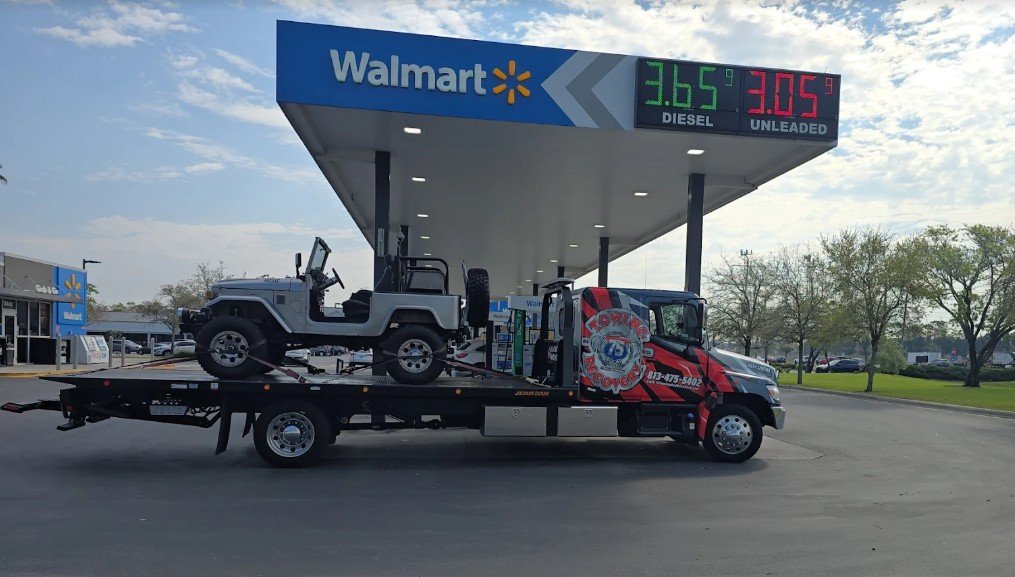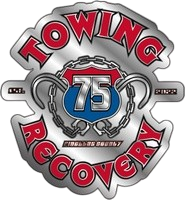Each day, the tow and roadside operators must devise innovative ways to manage the road issues and cope with the harsh economic landscape. The towing sector experiences direct changes due to various monetary forces, including fluctuating costs and differences in consumer behavior. But what types of factors are these, and how do they operate? This article explores the main economic forces impacting tow & roadside operators, offering insights to help them adapt successfully.
Economic Forces Impacting Tow & Roadside Operators

Rising Fuel Costs and Their Domino Effect
Fuel prices are among the most critical problems for tow and roadside service providers. The costs of keeping a whole fleet of vehicles running suddenly rise, causing a company to lose its profits. These managers are usually put in a difficult position where they have to decide whether to transfer these costs to the clients or be responsible for them and suffer a loss in income.
The impacts of unsteady gas prices don’t stop there. More expensive fuel may cause higher vehicle maintenance costs because drivers abuse their vehicles to ensure timely delivery. In addition, when fuel is more costly, this is a decisive factor that makes customers leave their cars at home and reduces the consumption of towing and recovery services accordingly.
Labor Challenges in the Workforce
Tow and roadside operators are also facing challenges caused by labor shortages and wage inflation. The recruitment process is now more competitive, as many businesses are trying to find skilled drivers with the necessary licenses and safety features. To keep employees, businesses had to offer them higher wages, raising operating costs.
Additionally, companies are dedicating more resources to training programs to upskill staff. The current costs, part of the deal now, are the more in-depth training programs, which are an essential investment in the future but an overwhelming short-term financial burden. Adjusting to workforce changes, which are different occasionally, is an ongoing issue in the towing industry.
Vehicle Technology and Its Impact on Services
Advancements in the field of vehicle technology have resulted in growth as well as challenges for towing businesses. Cutting-edge vehicles now come with various technologies, from which electric drivetrains, automotive features, and elaborate diagnostic systems are the most popular. Despite these developments being a plus to the customer’s driving experience, they increase the tow operators’ costs and the need for specialized tools, as well as attending the appropriate training programs.
For example, removing electric vehicles (EVs) often entails an entirely new set of towing protocols, which are obligatory because of the hazards introduced by lithium-ion batteries. These improvements require operators to be updated quickly about the latest robotics and vehicle technologies, or the more modern competition may disadvantage them.
Insurance Premiums Taking a Toll
Tow and roadside operators frequently cite rising insurance costs as a financial strain. Because tow trucks operate in high-risk environments, they are burdened with specific incurred costs that are thus exorbitant. Besides, companies responsible for insurance have become stricter in their service agreements after understanding that the industry is too reliant on lawsuits and accidents.
A consequence is that companies have to constantly re-examine their profit margins to account for the insurance costs piling up on other operational expenses. Some even commit the error of passing on part of this expense, through surcharges, to the customers, which is a good way to irritate price-sensitive groups.
Shifts in Consumer Behavior
Changes in how consumers use vehicles are undeniably impacting towing operations. Ridesharing apps and remote working trends have negatively affected the frequency of longer trips, indirectly resulting in fewer vehicle breakdowns and, subsequently, less demand for roadside assistance. Of course, customer usage of public transport leads to fewer traffic accidents or breakdowns, which call for towing services.
On the other hand, the rise of car subscription services or vehicle leasing brings a new trend, and the consumers of these services may rely on roadside service agreements for towing. Successfully identifying the changing needs of consumers would enable tow operators to adapt their performance and thus remain in business.
Environmental Regulations and Compliance
The automotive industry has a very stringent environmental standard, which is a burden on tow and roadside operators. Regulatory demands for clean emissions, especially in urban areas, may necessitate operators to consider the incorporation of eco-friendly tow trucks or strict emissions controls. For instance, green initiatives may require taking on fleets composed of full switch to electric or hybrid heavy-duty tow vehicles.
Thus, the global movement towards sustainability is being thoroughly adhered to, but at enormous costs, such as the need to procure new equipment and compliance costs. Failure to comply with these regulatory measures would result in penalties, reputational damage, or a ban on the areas of operation.
Conclusion
The economic challenges affecting tow and roadside services will likely continue becoming more complex. However, proactively investing in technology, training, and compliance will reduce the risks accompanying a changing economy. To be ahead, financial resilience and the ability to change operational models according to the new challenges are require.
It is essential that today’s operators have a long-term perspective but can also be available for short-term flexible opportunities. Strategies like upgrading fleet vehicles to be more fuel-efficient, exploring different revenue streams, or strengthening local connections can help during challenging economic times and also help improve the business.
